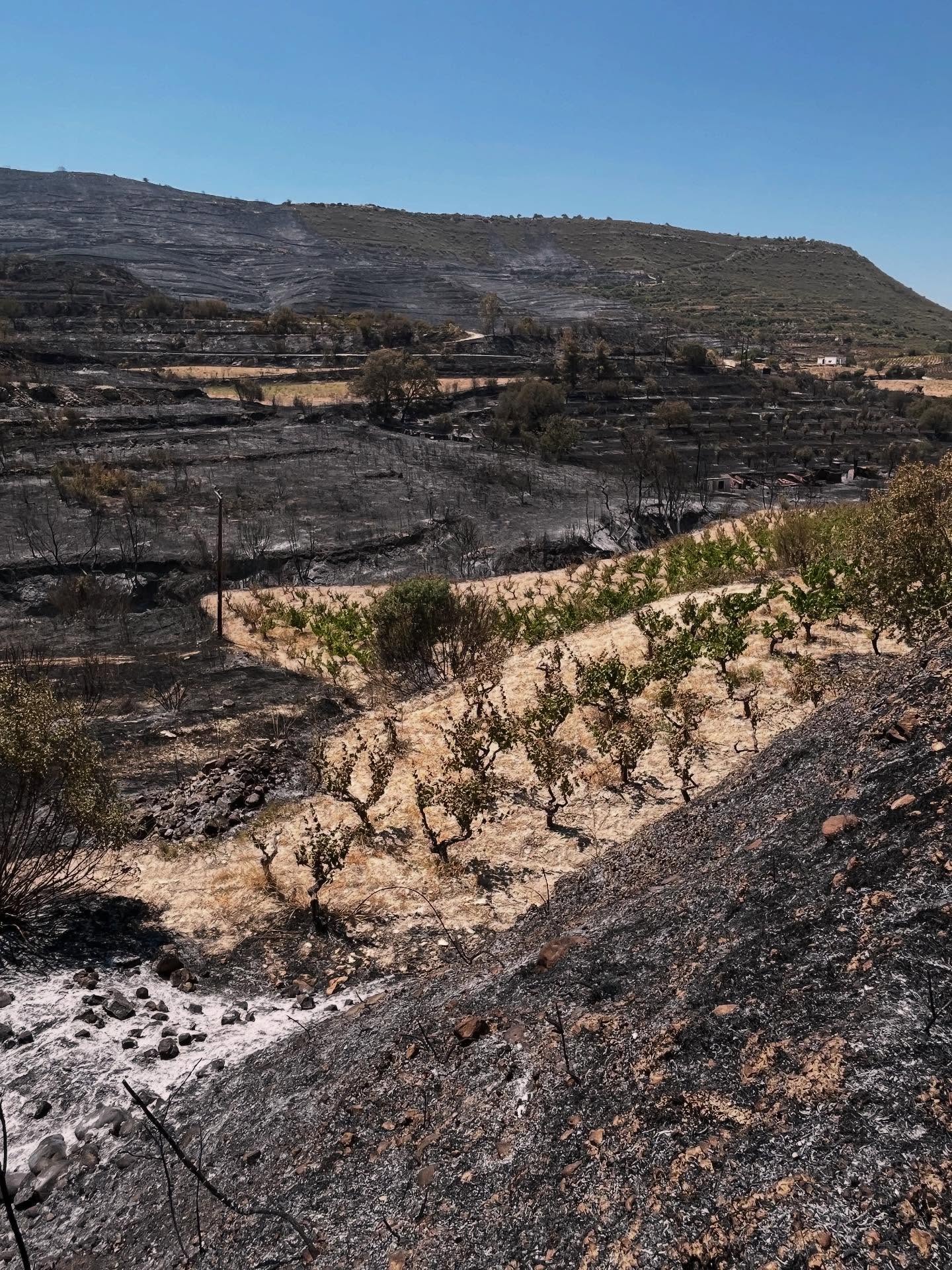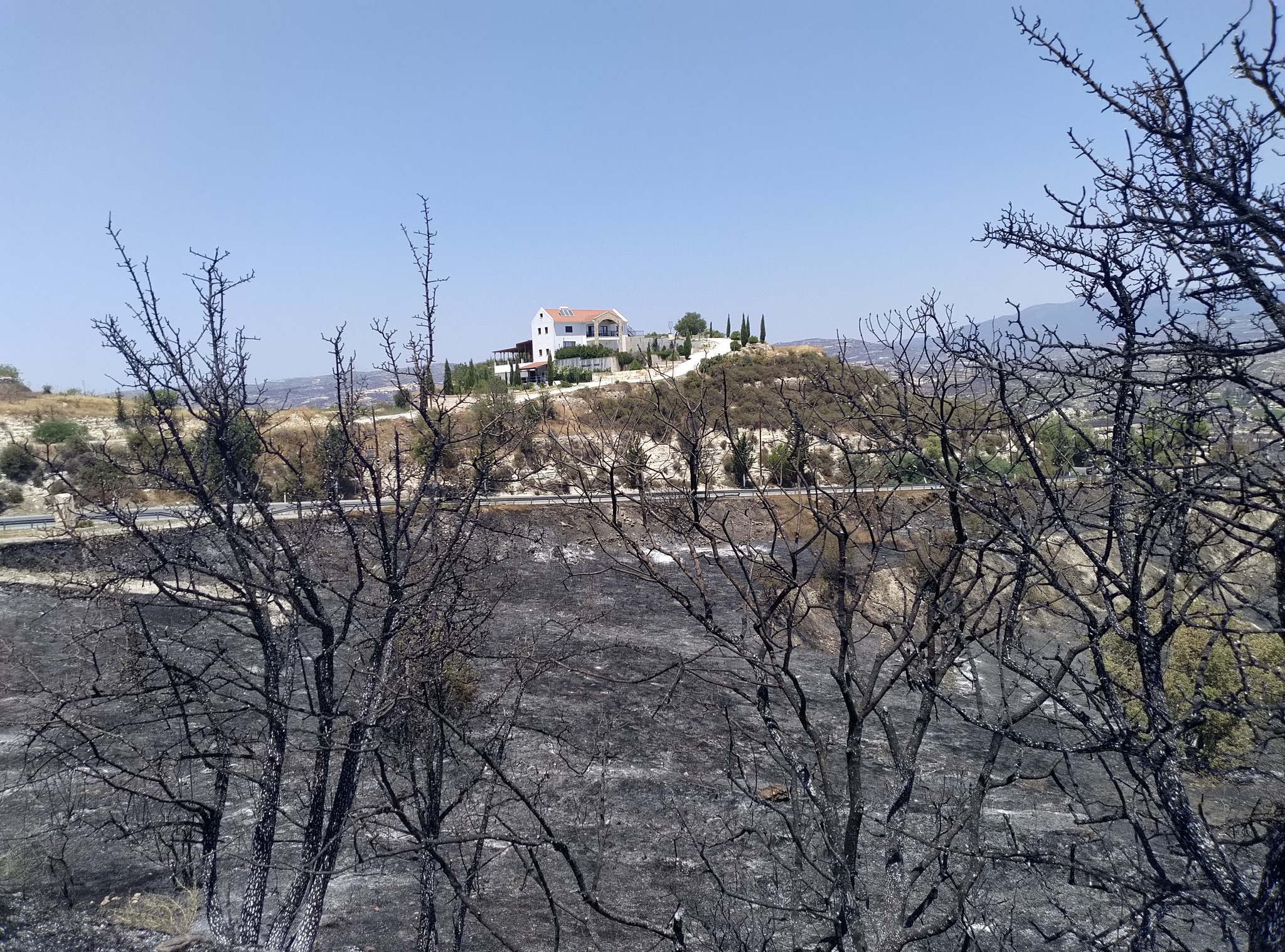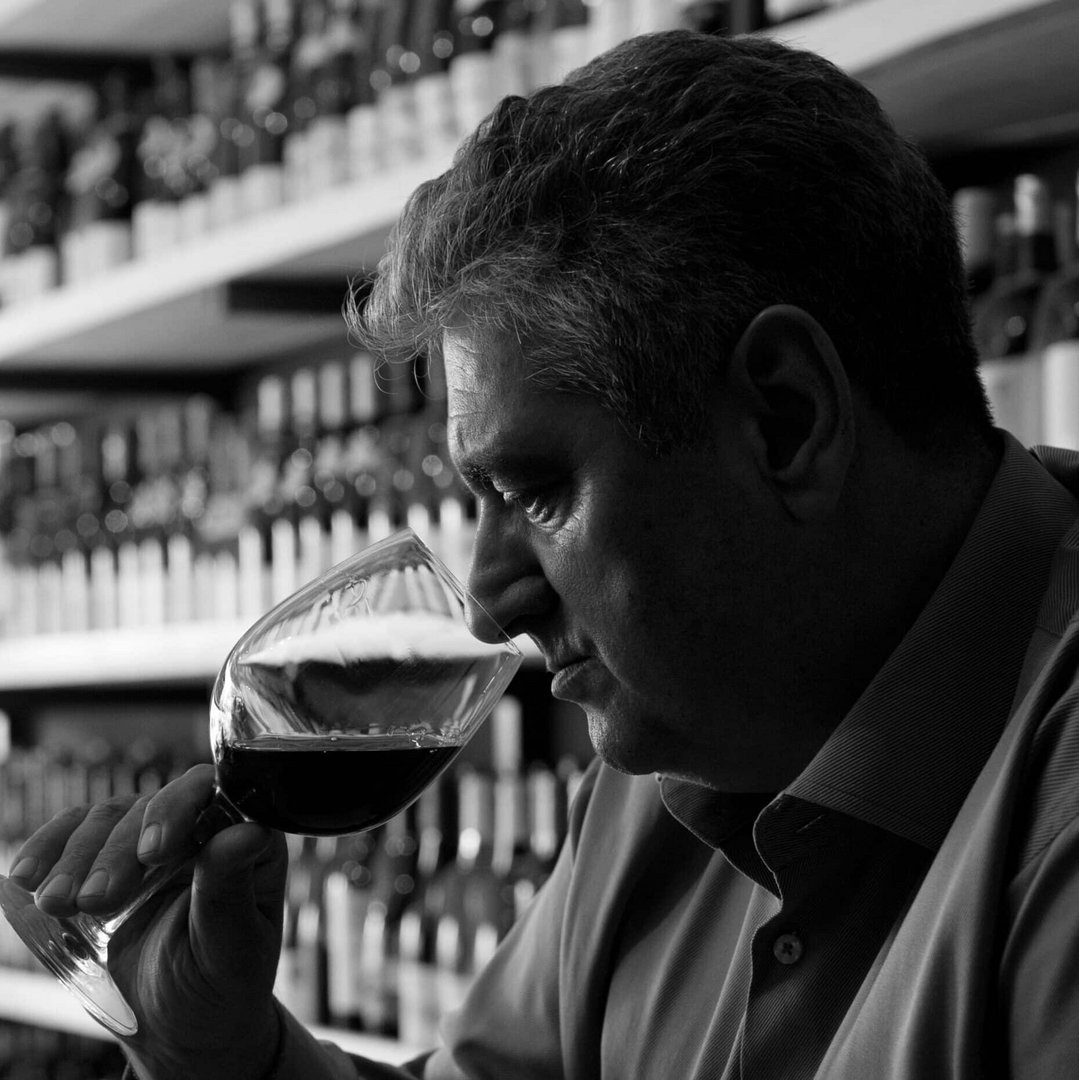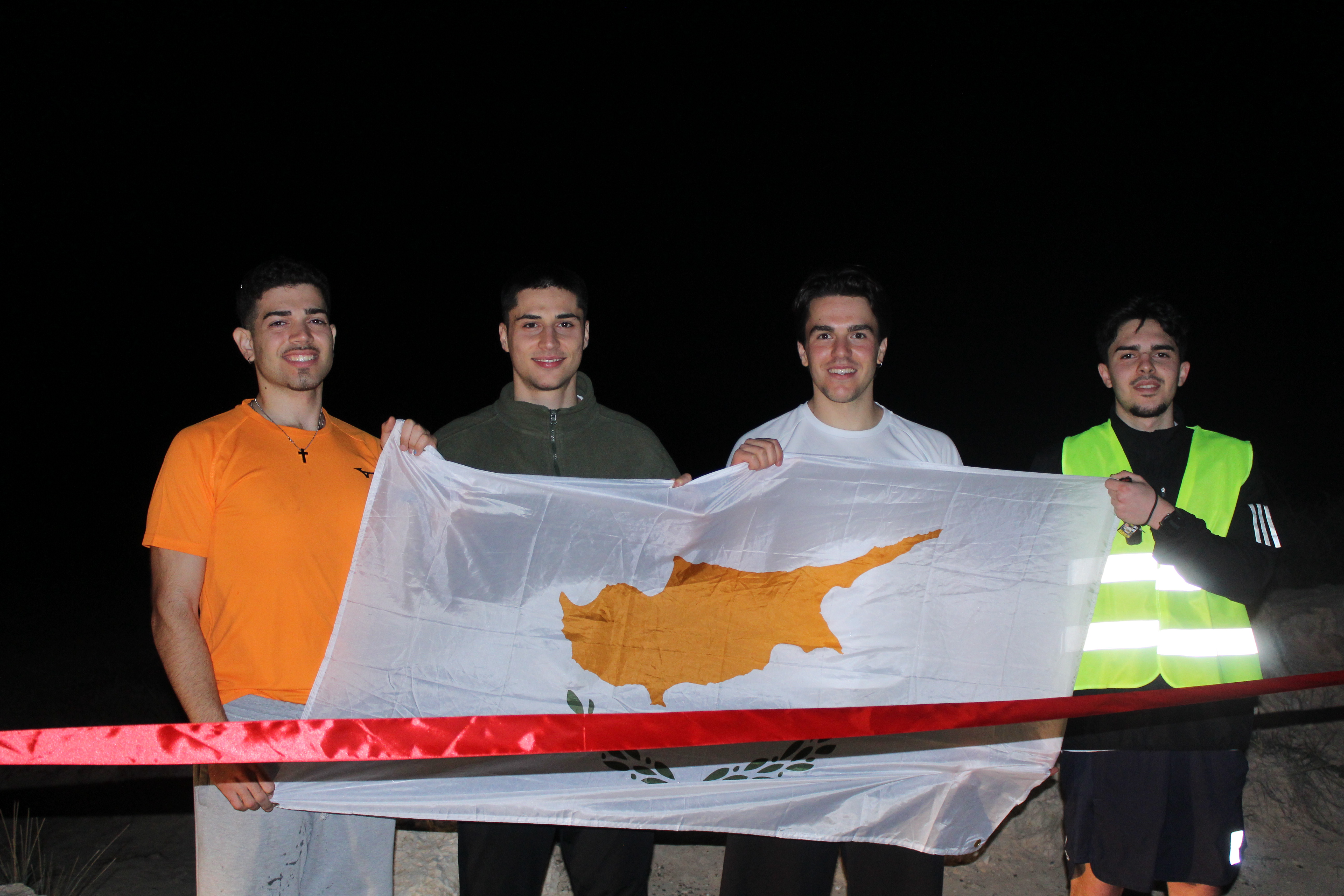Winemakers encourage those on the island to drink local
Every year wildfires grip the island. On July 23, firefighters and volunteers battled blazes in the wine villages of Limassol, taking two days to bring the situation under control. The fires have impacted most of the so-called Krasochoria region. The extent of the fire made it the largest in the history of the island.
About 125km² of greenery was reduced to ashes according to data from the European Space Agency’s (ESA) World Cover Programme. And while only 1.3 per cent of that area was considered residential, authorities reported 53 homes were damaged, including 32 that were completely destroyed. The village of Vouni was described by its leader as “blackened and devastated”.
Many wineries were affected by the wildfires and lost part of their vineyards. The list of wineries affected includes Ktima Malia KEO – the fire started near the village of Malia – Monolithos, Zambartas, Papaioannou, Argyrides, Gerolemo, Oinou Yi, Zenon, Erimoudes, Linos, Hadjicharalambous, Ayia Mavri, Constantinou and Vlassides. The estimated area of vineyards damaged is 55,000 decares, roughly 30 per cent of the region’s total 50,000 decares. In some areas, vineyard roots were scorched beyond recovery, while others sustained perimeter damage only. The intense heat also killed vital microorganisms in the soil, which are essential for healthy vine growth.
It is believed the Limassol fire was caused by arsonists, whose job has been made easier by global warming. Fires can destroy vines and their smoke can reduce the quality and sale price of the grapes.
Fire damage and subsequent recovery will vary with each situation. Each winery will need to carefully assess the damage to their vineyard and decide what is best for each block and their business.
Vines are tough – most vines with minor to moderate damage should recover fully within one or two years. However, things look bad on day one after the fire. The winemaker, or vignerons, need to be patient. Growers and winemakers will need time to recover before they start making decisions about the future of their vines.

All growers, winemakers and wine connoisseurs even are keen to know how quickly they can get back into full production, but it is important to step back and think carefully about the best plan of action going forward. It is going to take a few weeks before vines start to shoot (or not) and they can see what they have got to work with.
They may need to give vines as much time as possible to respond as they will need a clear picture before they decide on their plan of action. From previous experience and from fires in other regions around the world, there was a significant difference between the expected and actual damages to the vines.
In the winter following a fire, wine growers can maintain spur pruning and identify the remaining viable buds on the vine structure. It is worth considering taking two years to rebuild the best vine infrastructure. Yield will be sacrificed in the short term; it will set the vines up though for higher yields and quality in the years to come. If the vines are severely damaged, then replanting the vineyard becomes a necessity.
Smoke taint in wine occurs when wildfire or other smoke contaminates grapes, imparting undesirable smoky, burnt or ashy flavours. This is caused by volatile phenols in the smoke that are absorbed by the grapes and can later be released during fermentation or ageing. While some techniques can help mitigate the effects, smoke taint can significantly impact wine quality and potentially render it unsalable.
How can we prevent this? Growers and winery owners who have experienced a fire on their properties say they wished they had been better prepared before the fire season. And they do not mean the night before. Planning at the beginning of the fire season means things are in place. If and when fire hits, everyone needs to know what their role is and have the skills and equipment to perform it. They will need a well-thought-out plan as there may be little time to act.
Vine canopy, un-mowed grass between vineyard rows, and plastic drip irrigation systems are the biggest culprits in putting vineyards at risk of burning. Vignerons should absolutely keep their grass mowed and it is advisable that all other plastic, like the pipes on the water tank, be replaced with steel.
The biggest key to protecting a vineyard from future fires is the creation of defensible space, a clear minimum of 17 to 25 metres space around it free from any structures and growth. This process includes mowing any grass, clearing the underbrush, and removing some branches from trees to create separation between underbrush and trees. If the grass or underbrush catches fire, for example, it can flash up into the trees and take off. Mountain and hillside vineyards are the most vulnerable because of their proximity to forested areas and because they cannot be tilled. There is no doubt that these clearing initiatives are an investment – albeit a cheaper one than having to replant an entire vineyard.
While wine growers are certain to benefit from some government compensation, the best way for public to show support is to drink local wine. Let us support them in these difficult circumstances.







Click here to change your cookie preferences